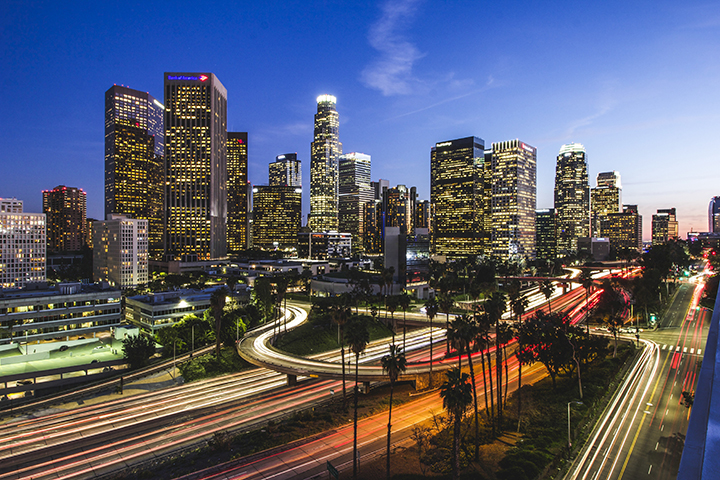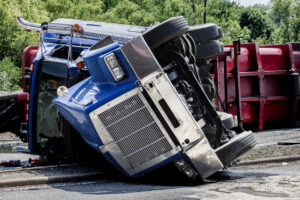SAN DIEGO — California is the riskiest state for trucking operations, according to the third annual State of the Data report from Lytx, a provider of machine vision- and artificial intelligence-powered video telematics, analytics, safety and productivity solutions for commercial, public sector and field service fleets. With data captured from fleets of all sizes and types within the trucking industry, Lytx’s 2020 report reveals the riskiest states, cities and roadways in the U.S., along with the riskiest days and times and trends in risky driving behaviors.
“2020 was an unforgettable year with unprecedented challenges for the trucking industry. With the continued demands facing fleets and drivers, it has never been more important for us to identify and share key areas of risk and opportunities to help improve their safety,” said Dave Riordan, executive vice president for Lytx enterprise business. “We use our dataset — the largest and most accurate of its kind — to identify and address top areas of driving risk, and to provide trucking fleets with insights they can put into action quickly to improve their safety.”
Identifying the riskiest areas in the U.S.
Lytx captured more than 10 million risky-driving incidents among trucking fleets in 2020. From all those incidents, Lytx examined single-square-mile road segments using its proprietary risk-scoring system, and found the following areas in the U.S. had the highest concentration of risk:
- Allentown, Pennsylvania: Interstate 78, east of West Emaus Avenue.
- Lambsburg, Virginia: Interstate 77, near Old Pipers Gap Road.
- Albuquerque, New Mexico: Interstate 40, near Coyote Springs Road Southeast.
- Durham, North Carolina: Interstate 85, near University Station Road.
- Lebanon, New Jersey: Interstate 78, near Cokesbury Road.
As in past years, most of the identified riskiest road segments are near interchanges, construction zones or on/off ramps, which increase driving risk. According to Lytx’s risk score system, these five road segments, on average, are 152 times riskier than the average road segment in Lytx’s trucking-industry database.
“We know sudden lane changes and shifts in driving speed surrounding interchanges can create a more volatile driving environment and more opportunity for dangerous incidents,” said Del Lisk, vice president of safety services for Lytx. “We urge fleets and drivers to be aware of the increased risk in these areas and level up their caution and defensive driving in these situations, whether you are passing through one of the segments featured here or any other highway interchange.”
Areas of Pennsylvania — and Allentown in particular — have been featured on Lytx’s list in past years, with the top two riskiest roads in 2019 and top three riskiest roads in 2018. This year, Pennsylvania improved in overall state rankings and does not appear in the Top 5.
The riskiest states for trucking fleets in in 2020 were:
- California.
- Washington.
- Texas.
- Oregon.
- Georgia.
These states overall were three times riskier than the 45 other states in Lytx’s nationwide footprint.
Lytx also examined its data in 60-by-60-square-mile areas and, for the second year in a row, identified Chicago as the riskiest U.S. city for trucking. Likely because of its role as a major transportation hub for routes in all directions, Chicago was 23% more risky than the next-riskiest city, Dallas.
“With a wealth of driving data paired with unmatched analytic capabilities, Lytx is able to determine driving risk and drill that down into specific cities or even intersections,” Lisk said. “While we know trucking routes may not always be flexible, we encourage managers and coaches to consider these areas of concentrated risk in supporting their drivers to approach every situation with a proactive, safety-oriented mindset.”
Riskiest days/times for truck drivers
Lytx found slight shifts in the days of the week and times with the highest prevalence of collisions and near-collisions. According to the company’s data, Tuesday was the day of the week with the most collisions for 2020; Thursday topped the list in 2019, and Wednesday in 2018. Sunday was deemed the “safest” day with the fewest collisions in 2020, a change from Monday in 2019 and 2018. In addition, most rear-end collisions occurred between 5 a.m. and noon, Lytx said.
“With 24/7 demand for deliveries necessitated by the pandemic, we’ve observed a shift in the days of the week with the most and least collisions,” Lisk said. “Compared to past years, fleets may have more routes and deliveries early in the week, rather than starting the week slowly. This could be a factor in Sunday having the fewest collisions and Tuesday having the most collisions.”
Trends in risky behavior
Even with increased demand in 2020, Lytx trucking clients showed strong improvements in several key, high-risk behaviors, including late response (77% improvement), following distance (51%), red light (38%), unsafe lane change (38%) and drowsy driving (29%).
Compared to other fleet types — such as waste, transit, construction and others — trucking fleets showed safer behaviors in the following areas:
- Loose object in cab (68% less often).
- Distraction related to electronic device (59% less often).
- Positive recognition, which occurs when the driver had a close call that wasn’t a result of their own actions and prevented potentially significant consequences by exercising safe driving practices and/or when the driver demonstrated courteous driving (33% MORE often).
“Trucking professionals are clearly working hard to proactively approach safety to protect themselves and the communities they serve,” Lisk said. “For drivers spending long hours on the road and driving longer distances than other transportation-adjacent industries, this is a remarkable feat.”
However, the Lytx report showed some risky behaviors increasing among truckers, including speeding, incomplete stop sign or failure to stop at a stop sign.
“We share this information as an opportunity to shed light on the areas where drivers, managers and coaches should pay special attention in order to approach safe driving proactively,” Riordan said. “From recognizing when and where truck drivers may face more risky behaviors or higher collision rates to understanding exactly which behaviors are proving challenging for the industry, we hope these unique insights from Lytx can help the trucking industry stay informed as drivers head out on the roads this year.”
The Trucker News Staff produces engaging content for not only TheTrucker.com, but also The Trucker Newspaper, which has been serving the trucking industry for more than 30 years. With a focus on drivers, the Trucker News Staff aims to provide relevant, objective content pertaining to the trucking segment of the transportation industry. The Trucker News Staff is based in Little Rock, Arkansas.
















Louisville, Ky and there are others are extremely dangerous. If you are going to show danger and risk, you should include the danger of the times which includes but not limited to robbery, hijacking incidents, racial violence and so on.